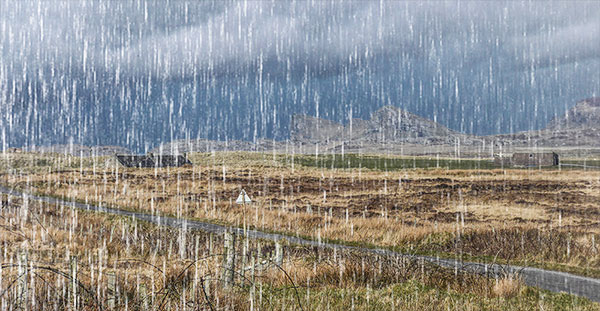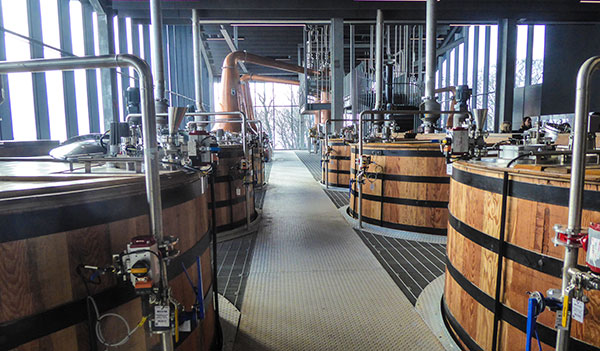
..........................................................................................................................................................................................................
back to the beginning again

advice to purchase from your local bike store is well-intentioned and ultimately pragmatic. as we have also been drilled to learn, 'the internet won't fix your bike'; imagine how the owners and staff of your local bike shop will feel when you wander in with an ultegra di2 groupset purchased online, and ask them to fit it to your bicycle. how would you feel? and as bicycles become ever more complex (whether they need to or not), there will ultimately be componentry that is beyond the scope of the home mechanic, either to install or repair.
however, both we and they have to face up to the fact that all are reputedly still in the throes of a 'cost-of-living-crisis' and it's common knowledge that items purchased online tend to be a tad cheaper than those on sale in your local bike shop, for which there are many mitigating factors. it is what i believe are commonly referred to market forces, and i don't doubt that there are independent bike shops which cheerfully welcome those with internet bought componentry, making up the difference with their labour charges. those too, can be thought of as the same market forces.
there is, however, a bit of a conundrum in relation to the above mentioned circumstances. though not everyone will be aware, almost every box containing a newly purchased bicycle features wording on the lid indicating that, were the enclosed bicycle to be assembled by other than an authorised or competent mechanic, the purchaser need not expect much satisfaction should a warranty claim become necessary. quite what constitutes an authorised mechanic is a debate for another day. as far as i'm aware, trek bicycles are the only company so far to prevent their authorised dealers from supplying an unassembled bicycle to eager customers.
i brought up this very situation with trek's head office many years ago, pointing out that, should i desire to own a trek bicycle, it would involve two ferry trips, two bus journeys and an overnight stay to acquire the hypothetical trek bicycle of my dreams. due to their apparently restrictive sales policy, my trek would undoubtedly cost substantially more than a mainland-based customer. i can only suppose that trek figure that the number of sales they might lose due to this policy is hardly worth worrying about.
sadly, they're probably correct.
however, many of us in the hebrides were in the habit of ordering our necessities, such as tyres, tubes, cables, bar tape etc., from chain reaction cycles, originally based in southern ireland. the pleasant oddity that surrounded such purchases was that they would often arrive on the doormat within two days, possibly three at worst. such speedy delivery when you really needed that replacement component to continue riding was, i'm sure you'll realise, very welcome.
bizarrely, after chain reaction was absorbed into the wiggle universe and the operation moved to mainland britain, deliveries became significantly slower; sometimes longer than a week. those circumstances were often accompanied by strange delivery restrictions; who would have believed that a pair of 700x25c folding tyres would constitute a heavy package and thus be unavailable for delivery to the hebrides? particularly when the wiggle website promised worldwide delivery of entire bicycles. there followed some very interesting communications with wiggle's customer services department. so whether we ordered from chain reaction or wiggle it was often a lottery as to whether delivery would be allowed or not.
while i and my fellow sunday morning pelotoneers had great sympathy for the hapless employees who lost their jobs at both cycle retailers, we really did not necessarily shed a tear for the purported demise of both. bear in mind that we, and others like us farther north, off the west coast of scotland, mostly suffer from a distinct lack of local bike shops and have no choice but to garner a certain level of self-sufficiency, and order our velocipedinal requirements online.
but now comes news that the house of fraser group, already owners of evans cycles, had purchased both wiggle, and chain reaction earlier in march, with the intention of restoring both to the e-commerce world by the end of this month. do we trust them once again? haven't we already found alternative sources? is it possibly too little too late?
only time will tell.
monday 25 march 2024
 ..........................................................................................................................................................................................................
..........................................................................................................................................................................................................smug

as easter approaches, it is apparent that visitors have chosen to brave the elements they may not have expected, in order to visit the centre of the known universe that is the island of islay. as i wended my merry way south west to debbie's for lunch on saturday, into the teeth of a 70kph cold headwind, i was passed by several foreign plate cars and minibuses, while as i rode my 'cross bike along the strand, i came across the first two motorhomes which had obviously opted not to pay for a power hook-up at the camp site at port mòr in port charlotte.
this had all been preceded during my walk home from the office on friday lunchtime, by three visitors ahead of me, quite clearly heading to the round church at the top of main street, either to search for family graves in the cemetery, or intent on viewing the magnificent interior of the building. during the week, the ubiquitous groups of three, four or six (you almost never come across five) predominantly male visitors wearing woolly hats and carrying backpacks, heading down main street towards the distillery. it is, we have all agreed, that time of year once again.
the surprising element has been that of cyclists. given the less than equitable weather in late march, early april, it's relatively unusual to espy any sign of velocipedinists at any part of the island. on my return trip to port ellen distillery on tuesday of last week, i met not one single cyclist, yet since friday, they appear to have come out of hibernation en masse.
my friday afternoon paper route to the rhinns was somewhat blighted by a searing headwind from bridgend to bruichladdich, resulting in a 'head down' attitude as i perambulated uiskentuie. it was only a brief upward glance along its length that had me notice two cyclists heading in the opposite direction, having a far easier time of it than yours truly. and only that morning, i had watched a small peloton of visitors on e-bikes, ascending bowmore main street as if it actually descended. and it was e-bikers that offered the opportunity for unfettered smugness on saturday afternoon.
having extended my lunchtime just a tad due to a pleasant conversation about ferries (i was fortunate to have been invited to turkey last weekend to witness the launch of the first of islay's two new ferries at the cemre shipyard in yalova, istanbul), i set off from bruichladdich to ride my habitual afternoon parcours beginning at foreland hill.
in a passing place at the foot of the hill, were six young blokes either astride bicycles or adjacent to others. offering a 'hail fellow, well met' as i passed, i had reached the final portion of the climb, when two of the riders aboard what were then clearly seen to be e-bikes, passed me with relative ease as we neared the top of the climb. as they steered to the passing place at the top, however, i witnessed them drop the bikes to the verge and sit on the grass, puffing and panting.
i passed with a cheery wave aboard my acoustic specialized crux.
the remianing four from the same group, despite also aboard e-bikes, had apparently been unable to keep up with their alacritous companions, but also failed to catch my good self. you will gain a better appreciation of my smug demeanour when i point out that, apart from having battery power at their behest, i figure they were all less than half my age. and since the e-bike hire on islay also hires out regular acoustic bikes, i questioned internally why it had been necessary to hire e-bikes in the first place? does the younger generation no longer possess any pride or stamina?
however, as if my personal self-aggrandisement and ego were insufficiently stroked already, when descending towards the rspb centre at aoradh, blown along by both wind and heavy rain, it dawned on me that those six e-bikers were probably heading to kilchoman distillery, clad only in denim or lightweight jackets. they were most certainly not prepared for heavy rain, despite this being the hebrides in march.
don't you just love it when a plan comes together?
sunday 24 march 2024
 ..........................................................................................................................................................................................................
..........................................................................................................................................................................................................someday my prints will come

the newspaper at which i ply my trade was originally printed on a single-head, offset litho machine up until a matter of years ago.while the printing press itself still functioned well enough to be of continued use, the silver-master platemaker was ultimately the bringer of its demise. litho printing is based on the premise that certain areas of the printing plate will accept ink, while others reject it; rather obviously, words and pictures form the parts that are ink friendly. in order to maintain this accept/rejection process, the plate, featuring a reverse image of the final print, had to be constantly drip-fed with water, preventing the non-inked sections from drying out and thus proving receptive to ink.

the platemaker effectively made a photograph of the final artwork (in this case, a laser print of the page) to which a photo-sensitive silver-master plate was exposed. the parts left black rejected the ink, while the silver (exposed) parts welcomed it in with open arms. sadly, the lens hood, resembling the folded concertina-like coverings featured on elderly plate cameras, had disintegrated to the point where it no longer kept extraneous light from the image, and due to the age of the machine, it proved impossible to acquire spare parts. a new one was eyewateringly expensive.

the newspaper is now printed very efficiently on a xerox digital printer, offering a far less messy process, using toner powder as opposed to thick, gooey litho ink (of which we still have a few tins in the hall cupboard). but for those of us brought up on the messier, mechanical side of printing, those lasers have very little soul. they're also undeniably a product of the modern digital age; though there are many user-serviceable parts, if they don't work according to plan, hitting them with a hammer is not the recommended procedure. and though you'd think this modernity came with a longer shelf life, where the litho had offered three decades of (almost) reliable service, one of these digital printers collects its pension after three years and has to be put out to pasture after five.

there's also the occasionally irritating fact that it's well-nigh impossible to colour calibrate a laser printer. the newspaper has two identical machines on which the output is close, but no cigar. at least two of us in the office miss the old days, something we apparently have in common with photographer, michael blann.
the man who brought you a book of incredible images of iconic mountains from the sport's major races was, he admits, trained as a print maker before becoming a photographer. twenty years after undertaking a degree course at kingston university, he has now found himself back in the print room, making use of a technique known as photo-polymer etching. according to mr blann, "The Photo-polymer Etchings process has made it possible to transfer a high-resolution image onto a metal plate which is then inked up and printed on a traditional roller bed. The resulting images are rich in tone and depth and have an organic look and feel to them. It's possible to print both black & white images and also full colour by separating the image into x4 CMYK (cyan, magenta, yellow and key [black]) plates and over-printing them on each other."

however, unlike the laser printers i use at work, which offer a high degree of predictability in their output, the etching process outlined above is a tad more fractious. "As with all printing techniques, there are a million things that can go wrong along the way, so patience and an aptitude for working through problems is an important consideration." that said, the end results are quite magnificent, as can be seen in the images available to purchase on michael blann's website. and unlike laser output, created by fusing cmyk toners onto the paper's surface, the flat bed litho process offers a more textured result. "As the plate is squeezed through the press, the image is impregnated into the paper leaving an embossed line around where the edge of the plate was. The results can be spectacular."
you can see for yourself here
saturday 23 march 2024
 ..........................................................................................................................................................................................................
..........................................................................................................................................................................................................draught proofing

my reader may have observed that i have been remiss in the number of recent mentions concerning the winds often to be found strafing the principality. this is not to infer that such meteorological instances no longer feature in the hebridean day-to-day, just that my mind has been elsewhere of late. in fact, calmac have already indicated that several ferry services may be subject to delay or cancellation, both today and tomorrow. i just needed to make that plain.
persistent draughts such as those experienced across the sprawling estates have often been found to restrain the apprentice islay cyclist in the process of his or her progress across the island's decrepit, single track road surfaces. our most recent recruit, who, admittedly, has not been seen for many a sunday morning, on his first outing with the velo club, found himself questioning the veracity of his brake adjustment when other members of the peloton drew steadily into the distance. convinced that the calipers must be dragging on the disc, he stopped to check, only to realise that he was being held back by a stiff headwind.
at our particular level of velocipedinal activity, there is little by way of technological development that would offer to ameliorate such conditions. deep-section carbon wheels, while reputedly offering to slice through the air, tend to suffer greatly when confronted with any form of crosswind. and acquiring a frame possessing feather-weight properties offers little succour to the downtrodden, prone as it would be to buffeting from such disfavourable conditions. and as for the current trend to hide brake and gear cables within bars, headtube and main triangle, just don't get me started.
however, cycling's obsession with aerodynamics appears to have followed similar previous obsessions, creating yet another level-playing-field that provides not one iota of advantage to the seasoned professional, because all his or her peers have adopted precisely the same purported advantages. meanwhile, us ordinary beings scarcely have the need or power to take advantage of such niceties, despite the industry's insistence on trying very hard to sell them to us.
however, in relation to the science of aerodynamics, the immediate connotation is that any investigations would necessitate use of an expensive wind tunnel; not the sort of facility available to the ordinary velocipedinist on the sunday morning ride. well-acquainted with this coefficient of drag anomaly, a company by the name of body rocket has unveiled a prototype of what it claims is the world's first and only 'real-time aerodynamic drag force measurement system for cyclists.'
but, before we venture any further, i might mention that, many years ago, i was sent an srm power-meter setup for review, which demanded the installation of appropriately compatible software to allow post-ride analysis of the numbers generated during any particular ride. discovering this data to show a period where i appeared to have generated no power whatsoever (a bit of a stretch even for the likes of me), i began to read the manual, convinced the calibration was at fault. you can imagine how foolish i felt on realising that the missing portion of the graph was due to my freewheeling downhill.
the point of mentioning the latter state of affairs, aside from adopting a less than healthy level of embarrassment, is to show that possessing data is one thing - comprehending it, is an entirely different set of pedal revolutions. there are many cyclists now riding with integrated power-meters, the output from which makes no more sense than the uci rules concerning bicycle aerodynamics. assuming the body rocket hardware to ultimately become as ubiquitous as the power-meter, in many cases, the end result will be even more cyclists with graphs, charts and numbers that are every bit as incomprehensible as the power data discussed above.
at present the many sensors included within the body rocket hardware are the subject of a fundraising drive on crowdcube, so quite how much this unnecessary piece of kit will lighten your bank account is unknown. but despite my predictable cynicism, it would surprise me not at all to learn that there are many others positively drooling at the thought of festooning their carbon fibre with some body rocket kit.
it seems a tad incongruous, therefore, that the body rocket stem, shown above, would appear to have all the aerodynamic properties of a brick.
friday 22 march 2024
 ..........................................................................................................................................................................................................
..........................................................................................................................................................................................................space travel

on tuesday of this week, i was invited by diageo to the official opening of the revived port ellen distillery which last produced whisky in 1983. with the exception of the two kiln pagodas, the remainder of the buildings were demolished over a decade past, effectively leaving only the warehouses to indicate there had ever been a distillery in the first place.
as my reader will be aware, i care not for whisky, no matter the distillery from which it originates, but the opportunity for an early week bike ride to reach the distillery (32k round trip) was too good an opportunity to pass up. the latter took place during islay's rush hour, as traffic from other villages on the island headed along the low road to reach the ferry terminal in time for the departure of the morning boat at 9:45am. however, to place that in some sort of mainland perspective, not only was i afforded plenty of space when being overtaken by trucks, buses, cars and taxis, but many were courteous enough to sit patiently while oncoming traffic made its way toward bowmore.
i have the distinct advantage that, on an island of some 3000 people, a cyclist is a less than common occurrence, particularly at this time of year, and many of those passing know me personally. that in itself assists greatly with individual safety; to a large extent, that has proven true for the majority of the sunday morning peloton. however, as i scanned my twitter feed at work yesterday, i came across a posting from argyll and bute council which stated, "Every week four people in Scotland suffer serious vehicle collisions while cycling - and fear of road traffic is the biggest barrier to more people cycling."
the tweet linked to a youtube video encouraging motorists to pass safely, leaving space for a life, the on-screen graphics making it plain that every cyclist is also a human being with memories, dreams and aspirations too.
however, it seems that there may be a conundrum at work here, directly related to the number of cyclists present on britain's roads, including those of argyll & bute. if i might return briefly to my opening paragraphs, the fact that i am often a lone cyclist on islay's roads offers little cause for concern. islay's roads, even during the purported rush hour are hardly congested with traffic, and in a small island community such as this, there tends to be less in the way of apparent road hierarchy. those 40ft articulated trailers are every bit as likely to grant road space to yours truly, as i am keen to reciprocate. even at weekends, when there may be a (small) peloton of cyclists, all parties seem mostly content to look out for each other.
on the mainland, despite my limited experience of cycling in urban and city settings, i'm aware that cyclists rarely appear to be apprehended as human beings simply making use of an alternative means of transport. it seems frequently the case that cyclists are merely a mobile irritation that doesn't pay road tax, slowing down the more important members of mobile society. the tweet by argyll & bute council pointed out that the potential danger conferred by road traffic is the biggest barrier to more people cycling. the conundrum referred to above, is that more people on bicycles would clearly evidence a demand for suitable cycling infrastructure.
and where such infrastructure may prove impractical, or conditional on increased numbers, the fact that more cyclists were to be seen on britain's roads, would surely condition the driving population to their existence, as has become the case in north american cities such as portland, and davis, california.
i willingly admit that i am probably over-confident on my bicycle, though i stop short of taking any unnecessary risks. however, on blind corners, i am in the (police sanctioned) habit of riding in the centre of the road, hopefully to indicate that i do not wish to be overtaken. if i can't see what's round the corner, the car behind most certainly can't. i am confident enough to stake my claim to the portion of road along which i ride, well aware that, while this might work effectively on narrow country roads, it may be a less encouraging approach on urban roadways. however, if more were able to adopt such a stance, it might well have a positive effect on the manner in which cyclists are treated by other road users.
the tricky part is going to be convincing less confident cyclists to take the plunge and grow the happy throng. maybe we need a video showing that approach?
thursday 21 march 2024
 ..........................................................................................................................................................................................................
..........................................................................................................................................................................................................gravel rides lake district. andrew barlow. vertebrate publishing paperback 102pp illus. £15.95

i have been at the forefront of offering disdain for the current fascination with all things gravel, a genre that provides, for me at least, more questions than answers. and author of this particular publication, andrew barlow, has, perhaps unwittingly, added yet another couple of questions to the list. firstly, in his introduction to the book, he states, "Gravel riding has boomed in the last couple of decades, following its revival in the early 2000s in America." i like to think of myself as well-versed in the intricacies of velocipedinal life, but i know not of the revival of which he writes.
i'm afraid i am blissfully unaware of any gravel riding paradigm that existed prior to the current one, unless he has somehow confused cross country mountain biking with that of gravel? in 2007, at the behest of daniel wakefield pasley, and supported by chris king components and continental tyres, rapha america fostered the compulsive adventures of the rapha continental which saw a group of riders traverse lengthy stretches of american gravel aboard handbuilt steel road bikes riding on 28mm road tyres. to the best of my knowledge, the rise of the gravel meme only took place subsequent to this gravel initiative.
i'm really not sure that gravel, in its current sense, has been with us for more than the last twelve or 13 years. two decades seems a bit of a stretch. unless he refers to the rough stuff fellowship.
the second question that raises its ugly head, concerns the tyres employed in the pursuit of ultimate gravel. according to the author, writing under the heading of 'the bike', he states, "...my Salsa Fargo allows me to fit up to a 3-inch (75 millimetre) tyre, allowing me to have a slow but super-plush ride." tyre widths such as that suggested is surely more the province of mountain bike riders, suggesting that mr barlow and those he seeks to enthuse, might be better aboard something other than a gravel bike. and since mountain bikes have been around considerably longer than so-called gravel bikes, i believe a point may have been missed somewhere along the line.
though admittedly riding on the road, yesterday's bike ride to and from port ellen distillery aboard a specialized crux cyclocross bike, fitted with 33mm challenge grifo tyres, was hard enough on such rubber; the thought of riding 75mm scarcely bears thinking about. and his contention that these lake district rides can be ridden aboard, "...any half decent gravel bike" is somewhat undermined by his later statement, "Extremely efficient gearing is important when riding in the Lake District", advising that he runs a smallest gear of 30/42t, where we really are in mountain biking territory.
i am, of course, leaning very heavily towards cynicism with these comments, none of which bear any disparagement of the routes included. there is indeed great joy to be gained from riding gravel, particularly over parcours that have been curated for your personal delectation. how long this particular reinvention of the wheel continues to hold the mindset of the many remains to be seen, but presumably only as long as it takes the industry to 'invent' the next big thing.
mr barlow's book of 15 lake district gravel rides is, however, well intentioned and well organised, commencing as it does with advice on rights of way, a brief appraisal of bikepacking, and a reasonably comprehensive list of items you may wish to consider as necessary augmentation, both mechanical and apparel wise. this precedes section one: 'easy routes', followed by 'straightforward' and 'challenging routes'.
this pocket sized volume features a minimal, yet informed layout for each ride, commencing with the overall distance in both imperial and metric, a written introduction set above a graphic displaying the ride profile along with map references and other pertinent documentation. this is followed with the route overlaid on an ordnance survey map, step by step directions and several quality images from the ride. nearby bike and coffee shops are also highlighted. the culmination of this gravel crescendo is a 270km ride, wending its circular way north from the start in kendal.
opening gambit aside, this is a welcome addition to the growing number of books featuring gravel rides across various parts of the uk. pocket-sized in format, it slips easily into a jersey pocket of perhaps a chest pocket within your gravel-specific waterproof jacket. if gravel is something to which you are in thrall, your next holiday is already taken care of.
wednesday 20 march 2024
 ..........................................................................................................................................................................................................
..........................................................................................................................................................................................................